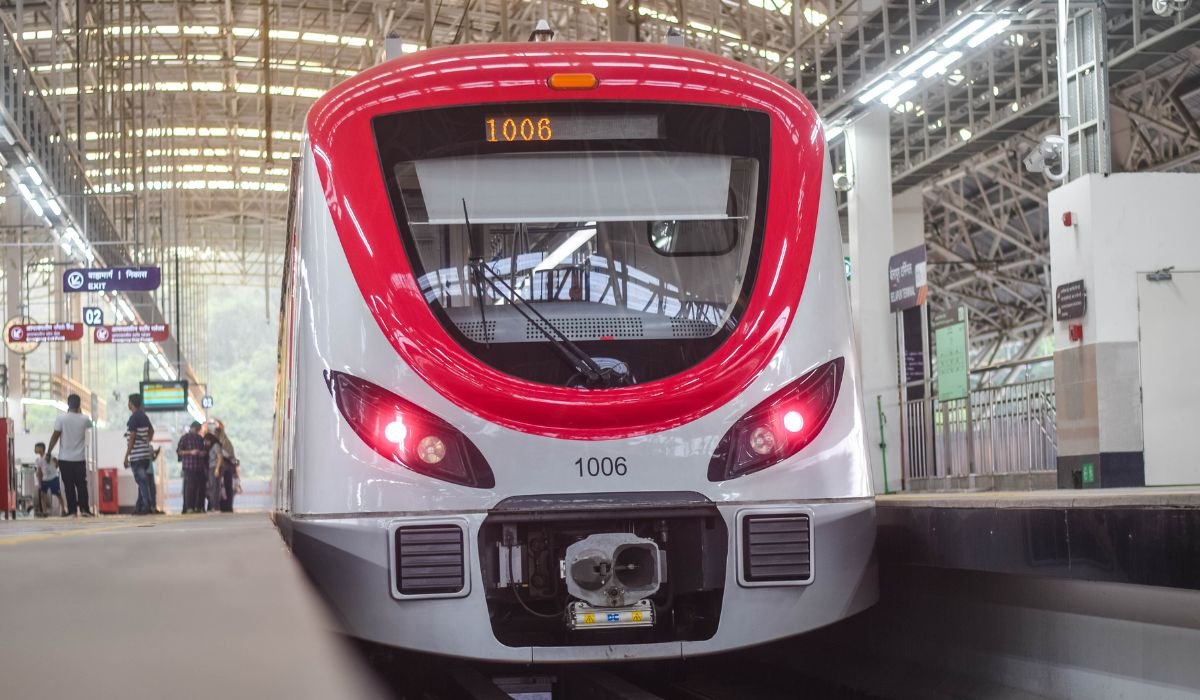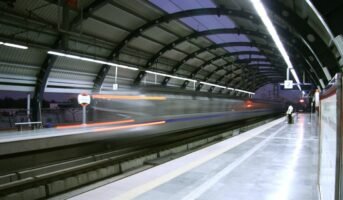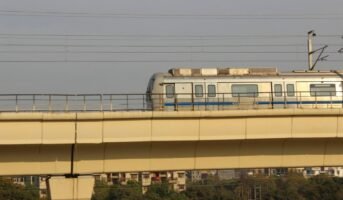January 8, 2024: The Delhi Metro Rail Corporation (DMRC) on January 7 said it catered to approximately 67 lakh passenger journeys on weekdays, exceeding projections of its use by 8%.
“The Delhi Metro Rail Corporation (DMRC) has exceeded projected ridership by 8%, catering to approximately 67 lakh passenger journeys on weekdays. This kind of demand cannot be met by a bus system,” it said in a statement, adding that the 392-km metro network, established in two decades, has become integral to Delhi’s infrastructure, earning recognition for its social, economic and environmental contributions.
“Reports from the EPCA, the Parliamentary Committee and TERI emphasise DMRC’s crucial role in combating pollution, operational efficiency, and substantial environmental benefits. The data underscores DMRC’s success, with its positive impact extending beyond transportation, providing a model for addressing urban challenges and emphasizing the need for a strategic mix of public transport modes in densely populated cities like Delhi,” it said.
The clarification by the DMRC was in response to an article published in The Economist, in which it was claimed that “India’s massive metro build-out is failing to attract enough passengers”.
In a separate statement trashing the report, the ministry of housing and urban affairs said that the Delhi Metro helped to ease the pressure on congested corridors of the city that cannot be solved by public bus systems alone.
“This is seen in some corridors of the city where the DMRC services more than 50,000 people in very high peak-hour, peak-direction traffic. To meet such high traffic demand through public buses alone, 715 buses would be required to travel in one direction within an hour in those corridors, roughly translating to a headway of around 5 seconds between buses – an impossible scenario! One dreads to imagine the condition of road traffic in Delhi without the Delhi Metro,” it said.
Study conducted by the The Energy and Research Institute (TERI) has captured the environmental, economic and social benefits of Delhi Metro Phase- I, II and III.
| Social benefits | |||
| S/N | Particular’s | Saving in 2022 | Expected Saving in 2031 |
| 1 | No. of vehicles off road daily | 5,16,414 | 10,93,423 |
| 2 | Vehicle Kms reduced (million kms) annual | 3,227 | 6,834 |
| 3 | Time saving by passengers (million hours) annual | 269 | 572 |
| 4 | Reduction in fuel consumption (tonne) annual | 2,55,000 | 5,34,000 |
| Environment benefits | |||
| S/N | Particular’s | Saving in 2022 | Expected Saving in 2031 |
| 1 | Annual Reduction in CO2 (tonne) | 7,66,000 | 16,06,000 |
| 2 | Annual Reduction in CO (tonne) | 4,728 | 10,250 |
| 3 | Annual Reduction in HC (tonne) | 3,389 | 11,111 |
| 4 | Annual Reduction in NOx (tonne) | 3,130 | 5,744 |
| 5 | Annual Reduction in PM (tonnes) | 73 | 252 |
| Value in saving (In million $) | |||
| S/N | Particular’s | Saving in 2022 | Expected Saving in 2031 |
| 1 | Annual value of time saved | 458.68 | 976.18 |
| 2 | Annual fuel cost saved | 167.23 | 358.63 |
| 3 | Cost of CO2 saved | 55.91 | 117.16 |
| 4 | Annual cost of pollutants saved | 18.23 | 39.38 |
| Total cost saving | 700.05 | 1483.36 | |
| Got any questions or point of view on our article? We would love to hear from you. Write to our Editor-in-Chief Jhumur Ghosh at [email protected] |

An alumna of the Indian Institute of Mass Communication, Dhenkanal, Sunita Mishra brings over 16 years of expertise to the fields of legal matters, financial insights, and property market trends. Recognised for her ability to elucidate complex topics, her articles serve as a go-to resource for home buyers navigating intricate subjects. Through her extensive career, she has been associated with esteemed organisations like the Financial Express, Hindustan Times, Network18, All India Radio, and Business Standard.
In addition to her professional accomplishments, Sunita holds an MA degree in Sanskrit, with a specialisation in Indian Philosophy, from Delhi University. Outside of her work schedule, she likes to unwind by practising Yoga, and pursues her passion for travel.
[email protected]











